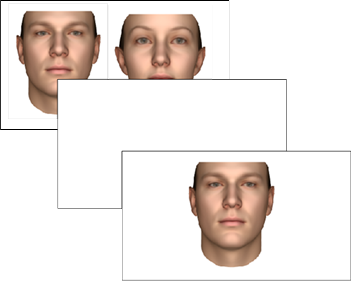PhD project: Neural dynamics of evidence accumulation in a memory task
Name: Marijke Beulen
Supervisors:
prof. dr. N.A. (Niels) Taatgen
dr. M.K. (Marieke) van Vugt
Period: september 2011 - december 2015
In this project, we try to unravel how people make decisions. We investigate this by measuring what happens in the brain when a decision is made.
A leading theory of decision making is the Drift Diffusion Model (Ratcliff, 1978). This model predicts that when making a choice, we accumulate evidence until we reach a threshold value. Upon reaching the threshold, we make the choice corresponding to the threshold reached, and the time it takes to reach the threshold determines the person’s response time.
If this model accurately describes the mechanism by which humans make decisions, the processes it predicts should take place somewhere in the brain of participants performing these tasks. Recent advances in neuroimaging have allowed researchers to start to look for this. For very simple perceptual decisions (e.g., “do I see leftward or rightward motion?”), there has been some success in localizing neural equivalents of the evidence accumulation process (e.g. van Vugt et al, 2012).
We want to go a step further and see if the evidence accumulation predicted by the DDM can also be found in the brain during more complex decisions, where more and different brain areas are involved. If this is not the case, we want to look for alternative mechanisms that explain how people make these decisions.
To do this, we measure EEG activity of healthy participants, as well as intracranial EEG activity of neurosurgical patients. Like scalp EEG, intracranial EEG measures electrical signals generated by the brain, but the electrodes are placed directly on the surface of the brain or even inserted into the brain. This allows for more precise localization of the source of the activity.
This EEG activity is recorded while participants perform two different decision making tasks. The first is a face discrimination task. In this task, all the evidence needed to make the decision is available when a person has to make it, similar to the perceptual tasks used in earlier studies. The second task is a face recognition task, where participants also need to store the information about which they have to decide in their working memory and retrieve it again. By comparing brain activity between these two tasks, we hope to find out if a single mechanism can account for both types of decisions, and whether or not this resembles the mechanism described by the Drift Diffusion Model.
References:
Ratcliff, R. (1978). A theory of memory retrieval. Psychological Review, 85, 59-108.
van Vugt, M.K., Simen, P., Nystrom, L.E., Holmes, P. & Cohen, J.D. (2012). EEG oscillations reveal neural correlates of evidence accumulation. Frontiers in Neuroscience, 6:106.



